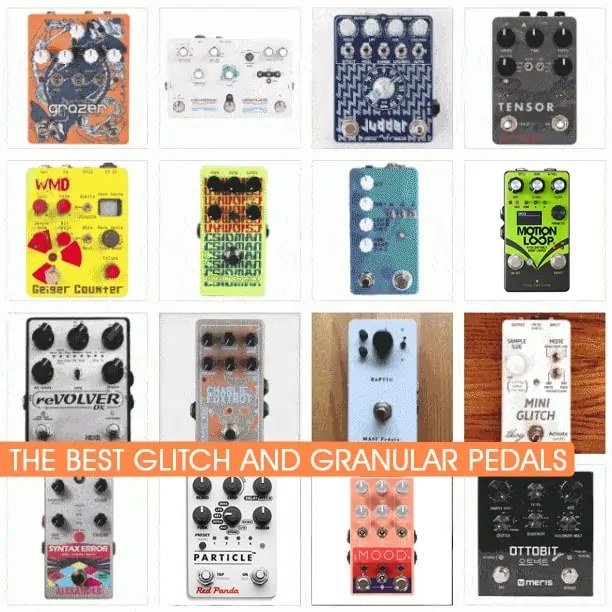
Ready to buy? Please use our affiliate links to Sweetwater, Thomann, Reverb.com, Amazon, and the other independent stores – that’s what’s allowing us to keep this site alive at no cost to you!
Last updated on 12.01.2023
A Guide to the Best Granular, Glitch and Stutter Pedals
The musical genre known as glitch has been around since the late 1990s. It embraces all sorts of electronic noises that are typically produced through error, such as the skipping of portable CD players and the stuttering of damaged CDs, as well as lo-fi sounds like bit-rate reduction, sampling artifacts, and extreme time stretching and compression.
For the uninitiated, here’s a great album by The Books that uses (mostly but not only) guitar samples in creative and often glitchy ways. Check out minute 8’30” for a glitch/stutter explosion.
This genre is often a lot more experimental. For your reference, here’s a more extreme example of glitch music.
Glitch artists are admirably adventurous when it comes to sound, so it makes sense that many guitarists have taken an interest in the genre. After all, guitar players have been exploring the terrain of messed-up audio for more than 60 years. Consider sound-wave distortion: It was considered undesirable until 1950s blues and rock players began pushing their amps to the limit and creating harmonically rich tube overdrive. For that matter, fuzz was discovered by accident in 1961 when a mixing console channel began to act up at a recording session. These “noises” were the analog glitches of their time, and since then they’ve become the standard for guitar tone.
From Screen to Foot
Traditionally, musical artists have created glitch effects in computer audio workstations by manipulating samples. In recent years, however, advances in digital signal processing have made it possible to replicate the sounds of the genre just by hooking up to a stompbox. And in the spirit of stutter-guitar pioneers like Radiohead’s Jonny Greenwood, players have begun to embrace these extraordinary sounds, as well as tape-speed effects, audio blurring and stretching, and many other tones associated with glitch.
Here’s a classic Glitch effect you can create with a simple BOSS DD-3.
Glitch Pedal Precursors
If you’re uncertain about investing in a glitch stompbox, you might be able to create similar sounds using effects you already own. Long before dedicated glitch pedals existed, guitarists discovered they could coax wild stutter effects from their digital delays by using them at extreme settings. The Boss DD-3, a much-loved digital delay since its introduction in 1986, has proven a capable way to generate stutter and glitch, as have the more recent Boss DD-5 and DD-6, which were released in 1995 and 2002, respectively. In addition, the relatively new Electro-Harmonix Canyon has a Sample-and-Hold mode that creates stutter effects. Other, now-discontinued pedals capable of these effects include the Digitech Digidelay and Boss RV-3 Reverb. Check out the videos below to see how to achieve these effects with each of these boxes.
And here’s a gallery of generic stompboxes that can be used for glitchy purposes.
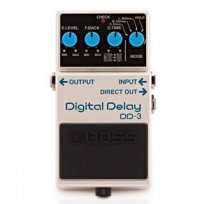
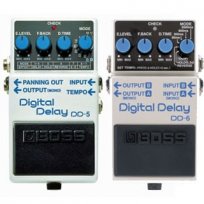
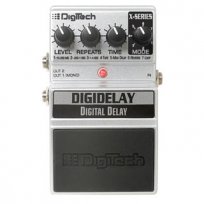
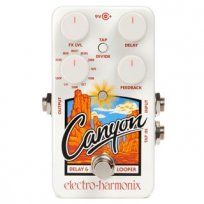
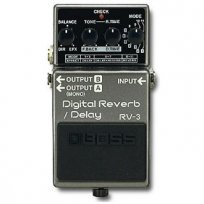
—
Modern Glitch/Stutter/Granular Stompboxes
Of course, if you’re looking for a pedal that’s built for the sole purpose of generating great glitch sounds, there are numerous units out there worth checking out. We’ve collected 20 of the best glitch stompboxes currently on the market. As you’ll see, many of them excel at not only skipping and stuttering but also other time-based effects. Read the descriptions and then dig into the videos provided to find the pedal that will take your guitar sound into new, uncharted realms.
We organized the units in these four galleries, according to their features, click on the thumbnails to see the video demos.
GLITCH PEDALS WITH A VINTAGE LO-FI ANGLE
Since the first digital audio glitches were generated by various devices of the late ’80s and early ’90s (think skipping CD player, video-game bugs, crashing PCs, badly looped samples, etc.) many modern glitch pedals are openly trying to recreate those “vintage” digital artifacts. Here’s a selection:
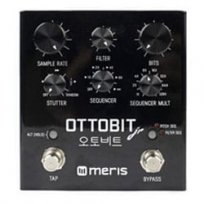
Alexander Pedals Syntax Error 2
Twice as wide as V1, this Multi-mode arcade game-inspired pedal packs a ton of new features, including a full stereo path, a mini-sequencer, and an LCD screen to help you make sense of the insane tones it can deliver. The modes include Stretch (glitchy delay/reverse), Air (grainy reverb), Ring (ring mod), Clube digital fuzz with tuneable filter), Freq (weird frequency filter effect) and Wave (Time based modulator). V1 is still awesome (and cheaper), but mono.
Meris Ottobit Jr.
Bitcrushing is at the heart of the Ottobit Jr.’s job description, but it can also do pitch shifting, sequencing and stuttering. It features a six-step sequencer module, a low-pass filter, expression and MIDI control, and a stereo output. The sequencer is especially novel, offering control over Pitch Sequence, Filter Sequence and Sample Rate Sequence. Its controls include Sample Rate, Filter, Bits (to change bit depth), Stutter, Sequencer and Sequencer Multiply, which sets the sequencer speed as a multiple of the tap-tempo There’s also an Alt button that lets you access a deeper parameter function within each of the six controls.
Magpie Stutterphone
A bizarre pedal built around a rotary phone dial. It’s a kill switch + fuzz that cuts the signal either by pressing the big red button in the center or by dialing a number in the rotary, which generates some sort of short square tremolo effect until the dial is back in its original position. This effect can be reversed by pushing the red button on the top side of the case. It also has a looper function (which can be synched to an external clock) that records your “kill switching” action and loops it, creating sound on/off patterns.
Cutting Room Floor Pedal (Recovery)
This is an extremely versatile, hand-wired pedal offering wild modulation, delay, freeze and stutter effects, with a lo-fi angle thanks to the Wow knob, which controls both intensity and modulation parameters, and the Stability control, which acts in conjunction with it as a tape deterioration effect. The freeze button allows swelling momentary effects.
Glowfly Pixel Dust
An 8-bit (triple) Looper and (tap tempo) Stutter. In Looper Mode, the red button toggles between record and play, while the other three activate the loopers, which can record up to 2 secods each: hold them down individually to record a loop, and then tap any of them to play the individual loop cycle (holding the button will play the loop continuously. The center knob changes the speed and pitch of playback of any loop that’s playing, while the side blue button will make the loop play in reverse when tapped. In Stutter Mode the red button becomes the tap tempo control, while holding any of the other three buttons will record and instantly play a short loop. The center knob here works as tap subdivision modifier.
Magpie Crazynator
Created from a circuit-bent toy, the Crazynator is a distortion/bit reducer pedal with pitch shifting and a wonderfully metallic-sounding “robot” reverb. A touch-responsive controller (apparently the screw end of a light bulb) on top of the pedal adds an unusual but useful element of interactivity. There’s also a host of mini-toggle switches that affect pitch and also change how the touch controller behaves, as well as a small constellation of LEDs that flash in time to the audio signal. The orange knob in the center feeds your signal back into the unit and works in conjunction with the yellow output knob at the back of the box to add intense levels of grunge. Most curious is a plastic socket that can be screwed onto the touch controller to provide other ways of interacting with the pedal.
—
INTUITIVE SAMPLE MANGLERS
Fun and weird sounding, the pedals in this list are sample-based (aka “granular”), simple to use and feature mostly knobs and just a few switches if any. They are recommended for those creative players who don’t have too much patience to dig through dozens of features, preferring instead a more intuitive set of options.
Malekko Heavy Industry Charlie Foxtrot
Charlie Foxtrot is a digital buffer/granular pedal that offers both auto-capture and manual capture of the input signal. The six knobs control buffer size, duration of repeats, pitch mode, the trigger threshold, and mix and preamp levels. Any combination of Size, Duration, Pitch and Threshold settings can be controlled both as positive and negative sweeps with an expression pedal or via control-voltage input.
Bananana Mandala
A rather simple but utterly creative multi-function glitch pedal with eight modes including Repeat, Reverse, Random, Trigger, multi-speed playback, pitch shift, square wave sound. Two knobs (Time and the mode-variable Function) allow extra manipulation, together with the momentary footswitch, which in Up and Down mode creates repeats increasing or decreasing in pitch.
The King of Gear Mini Glitch
The Mini Glitch is the smaller version of the King of Gear’s deluxe Feral Glitch, which was developed to recreate the random stutter Max/MSP effects of Radiohead guitarist Jonny Greenwood. It’s capable of aggressive glitch sounds, but it can also produce smoother loops more suited to textural or ambient applications.
Copilot Fx Simulcast
The Simulcast is a glitch/stutter/lo-fi sampler/hold pedal that excels at everything from chopping and pitch-changing to tape-speed effects. It has controls for Playback, to change the pitch of the playback, and Rate, which sets the sample length and interacts with Playback. It also features a momentary switch and a TRS expression/CV jack for external control of Playback.
Hexe Guitar Electronics reVOLVER DX
The reVOLVER DX does stuttering, tape-speed effects and many types of repeated or randomized drones. It features up to four seconds of sampling, a set of new and easy-to-access modes, and an automatic fade function.
MASF Raptio
Information is scant on the Japanese-made Raptio, but it’s frequently available through Reverb.com, and as the video below demonstrates, it sounds like a monster. The small knobs set the input and output levels, the toggle selects Freeze or Stutter modes, the large knob sets the sample length and the momentary switch launches the Raptio into action.
—
DELAY-BASED GLITCH/STUTTER PEDALS
Delay is, par excellence, the effect favored by experimental musicians. Maybe that’s why some builders decided to couple their glitch designs with a delay circuit. Of course, we assume you are aware of the difference between a delay (which never stops repeating what you are playing until you turn it off) and a sample loop (which is just a section of your performance, looped). These pedals feature both circuits.
Chase Bliss Audio MOOD
Presented as a “study in interaction,” this playful granular delay features a Wet Channel of spacial effects (built with OBNE) and a Loop Channel (built with Drolo FX) that merge and interface with each other in three different routing modes, opening up a world of sonic experimentation including time-stretching, freeze, overdub, dissolve and smear.
Red Panda Particle V2
Particle V2 is a Stereo, granular delay/pitch shifting pedal that chops your signal into small grains and then does various strange, trippy, robot things to it, using the techniques of granular synthesis in real-time. Results range from radical pitch and delay modulation to shimmering repeats to stutter/glitch sounds. It offers Five delay modes (random, density, LFO, random pitch, and reverse) and three pitch modes (detune, density, LFO) with shifting capabilities of +/-1 octave. V2 adds Tap Tempo and Presets.
Montreal Assembly Count to Five
Count to Five is a unique delay/sampler that offers many sonic possibilities. It has three modes that can create sped-up and slowed-down—as well as forward and backward—tape effects, audio slicing, looping and overdubbing. Quantized pitch-shifting makes it possible to create tones that are harmonized chromatically or in perfect fifths and octaves, or you can turn off quantization and set the pitch wherever you want. There’s also an Expression control that can govern the behavior of various parameters. Despite having just four knobs and a few switches, Count to Five is a deep and sonically rewarding pedal.
Pladask Etterslep
A 3 highly tweakable delay modes combining granular synthesis, tapped delay line and modified sample playback: GRAIN mode does shuffling forward/backward delay, and time stretching (no pitchj shifting); TDL produces various unnatural reverb/delay effects including gated and reversed reverbs; TAPE is similar to GRAIN but with changes in pitch.
Catalinbread CSIDMAN
Although it can function as a standard digital delay pedal, the CSIDMAN —pronounced “Discman”—has Cuts and Latch controls that let it create the sound of a skipping portable CD player. Though its behavior is pseudo-random, the CSIDMAN gives you some degree of control over it, though, fortunately, not enough to make it entirely predictable.
Free the Tone Motion Loop
A Stereo pedal that samples (wither automatically or by triggering the footswitch) a section of your performance and loops and manipulates it in real-time, adding effects like pitch shift, delay, reverse, and filter. It can also randomize the order of sections of the sample to create accidental glitchy parts. All the knobs can be reassigned to control any parameter, and the Expression pedal is also freely configurable.
—
GRANULAR/GLITCH PEDALS WITH DEEPER FUNCTIONALITY
The pedals on this list are a little more intense (as in feature-packed) than the others. Although it will require patience to overcome their steep learning curve, they will undoubtedly satisfy your desire for the ultimate in glitch. For true sonic explorers.
Hologram Electronics Infinite Jets
Infinite Jets tracks the dynamics of your playing and samples individual notes and chords, then reinterprets them as new sounds using two independent channels. It features four sampling effects—Blur, Synth, Glitch and Swell—that you can use to create endless sustain, glitching granular loops, and lush ambient textures that seamlessly fade from one chord to the next.
Chase Bliss Blooper
Built-in collaboration with artsy YouTuber Knobs, this is mainly a looper that ALSO does granular effects. With its 30 seconds of high-quality loop time and 7 undo/redo layers, it can behave like a regular looper but also lets you do a lot of creative things, like crossfade two different loops, give it an analog feel, scramble it into a pattern, just to mention a few.
Red Panda Tensor
Red Panda’s second entry on our list, Tensor does stutter and glitch effects as well as reverse and tape-stop effects, pitch shifting, time stretching and freeze, all of which can be combined in creative ways. Stretch or compress your sample’s time with no pitch change, and loop, overdub and randomly slice phrases up to 4.8 seconds.
Pladask Elektrisk Baklengs
A 2nd generation granular pedal with greater dynamic control through footswitch options. It includes delay, time-stretch, pitch transposer, modulation, forward-reverse and a granular looper, with a footswitch that can be configured to deliver two momentary effects.
WMD Devices Geiger Counter
The Geiger Counter offers hundreds of truly face-melting sounds, converting your signal into a sample. A high-gain modern preamp drives an 8-bit computer, creating sounds that range from nice (tubey overdrive, lo-fi aliasing, hot gated leads) to total madness (impossible amounts of gain, multiple octave foldover, harsh digital data errors, and piercing sculpted noise).
Pladask Elektrisk Fabrikat
A lighter version of the FORM2, this pedal features 16 algorithms focusing on granular synthesis and modified sample playback, including time stretching, pitch shifting with time stretching, freeze and shuffling effects, glitching sample playback, and a beat repeater. The Hold modes produce Swell, pitch shifter reverb, filtered reverb, and a stuttering reverb as well.
Drolo Stamme[n] V4
Born as a tap-tempo looper, this constantly sold-out pedal evolved into a micro looper, time stretcher, glitch delay, tape machine, infinite sustainer, and reverb. V4 has 4 Looping modes (Micro, Stretch, Glitch Delay, and a Tape mode that does forward/reverse, pitch shifting and half/double speeds) and 4 Hold modes, which are reverbs with infinite sustain (Swell, Pitch, Filter, and Stutter).
Deep Space Devices Trigonaut
A noise device for experimental guitarist featuring octaver, glitch/stutter and an aggressive drive. It can deliver “leveled drive to high-gain fuzz,” but what this pedal excels at is sputtery, glitchy and stuttery noises controlled by the “Momentary”and “Consume” footswitch.
Dwarfcraft Devices Grazer
Grazer captures micro samples, or grains, of your signal and stores them in a buffer for manipulation and mangling. Define the sample length, shift the pitch of the grains, move forward and backward through them, or hold them for as long as you want by pressing the switch. Serious sci-fi sounds.
WMD Devices Geiger Counter Pro
The bigger brother of the Geiger Counter features all the same functions, plus 256 new wavetables (512 wavetables in total), and extra features like Wavetable “Morphing,” 16 foot switchable and MIDI switchable Presets. It can also be controlled via computer through a VST plugin. Features full MIDI control over all parameters and 2 assignable CV inputs, plus Dry/Wet Mix.
Pladask Elektrisk FORM2
(FYI, this pedal can only be purchased by attending a seminar in Norway). Fruit of a collaboration between Norwegian companies Pladask Elektrisk and BandOrg, the FORM2 is a Time Stretch/Granular Synthesys/Glitch/Loop pedal featuring 24 algorithms organized in 3 banks, with an extra 4th bank left blank for the owner’s own creations. The Switch knob and Toggle Switch “cooperate” to give the player various options when stomping on the Switch Footswitch.
MWFX Judder
Judder is a footswitch-based pedal that lets you capture samples on the fly and manipulate them to produce stutters, glitches and weird echo effects. It uses analog delay chip technology and at extreme sample lengths produces noisy lo-fi echoes. At the slowest repeat rates, you can hear the individual clicks and beeps that constitute the ghostly remnants of the chip’s audio memory.
Sonic Crayon FX Anti-Nautilus
A rare, PIC32-powered lo-fi granular auto glitch, auto repeat with pitch modulation. Operates at a12-bit in, 16-bit internal headroom & out with a 22KHz sample rate.















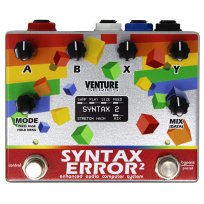
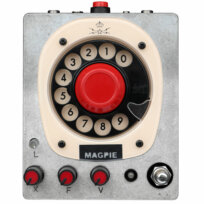
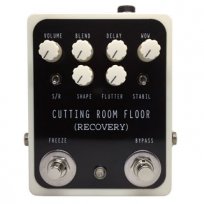
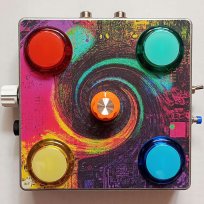
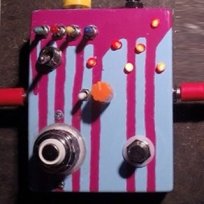
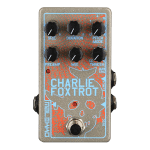
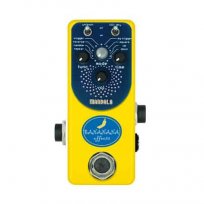
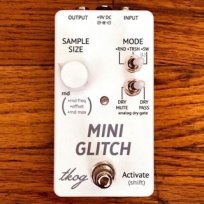
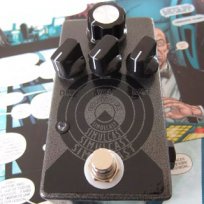
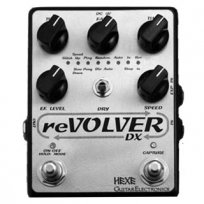
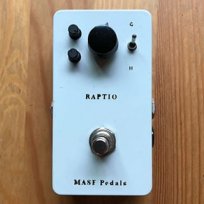
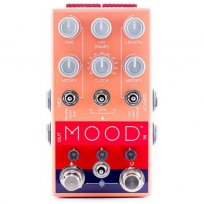
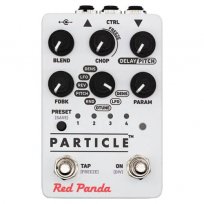
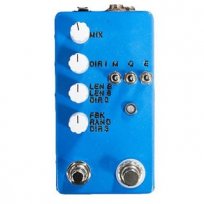
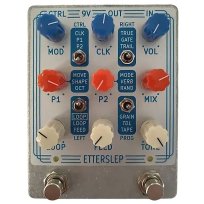
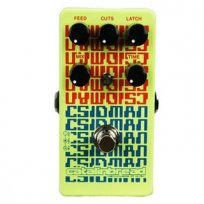
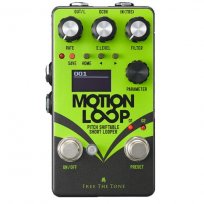
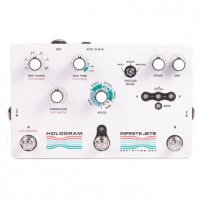
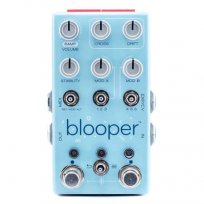
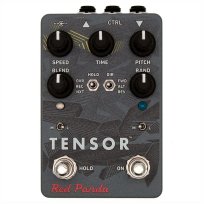
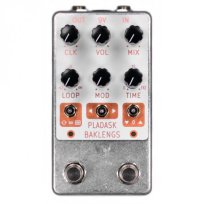
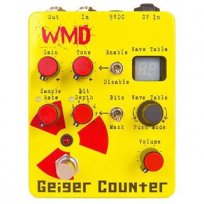
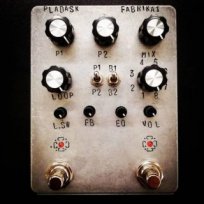
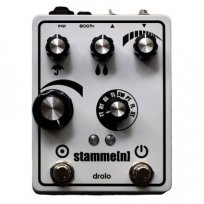
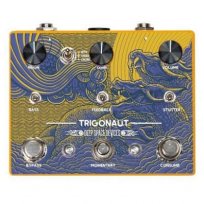
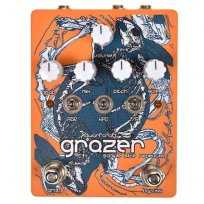
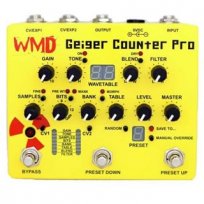
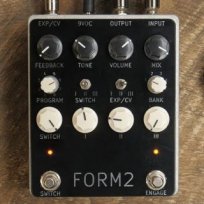
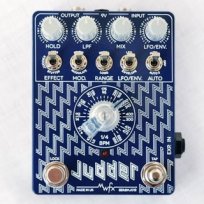








6 comments
Matt says:
May 17, 2020
Bananana Mandala is a glitch pedal that deserves a mention.
Paolo De Gregorio says:
Feb 23, 2021
Thanks for the note, Matt, we added it!
sp3ct3rs d3mos says:
Sep 8, 2021
drolo – stammen[n]
drolo – molecular disruptor
both should be on the list. 🙂
Paolo De Gregorio says:
Sep 10, 2021
THanks SP3CT3RS D3MOS, we added the Stammen for now.
multiCBU says:
Sep 11, 2021
You have in 1st tap info of Stamme[n] the info of Fabrikat.
Paolo De Gregorio says:
Oct 18, 2021
THanks for pointing that out, we fixed it.